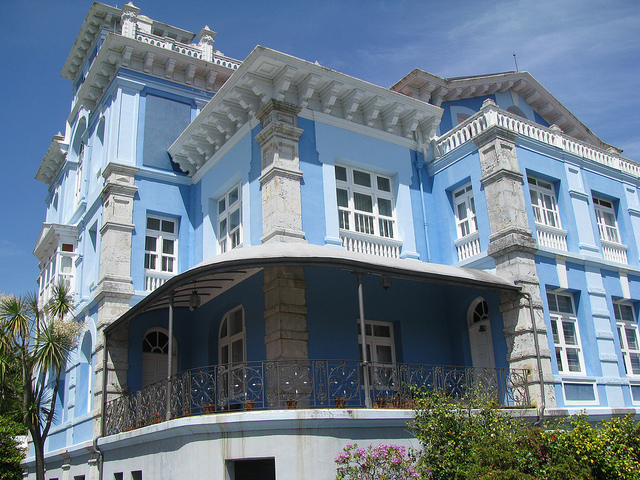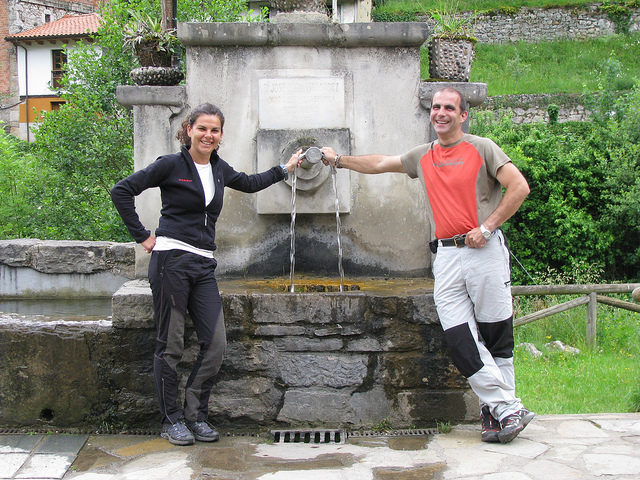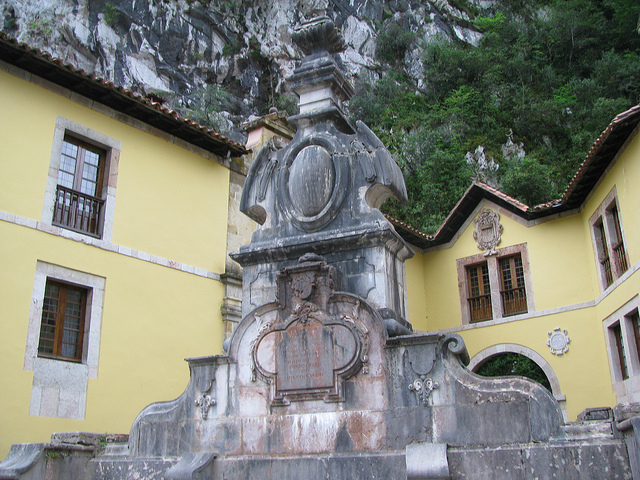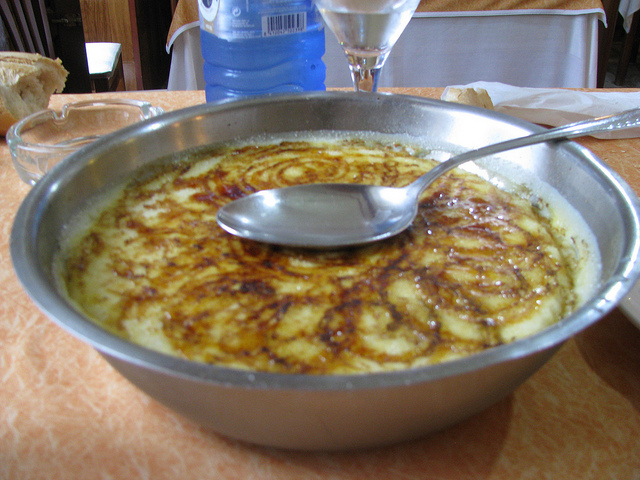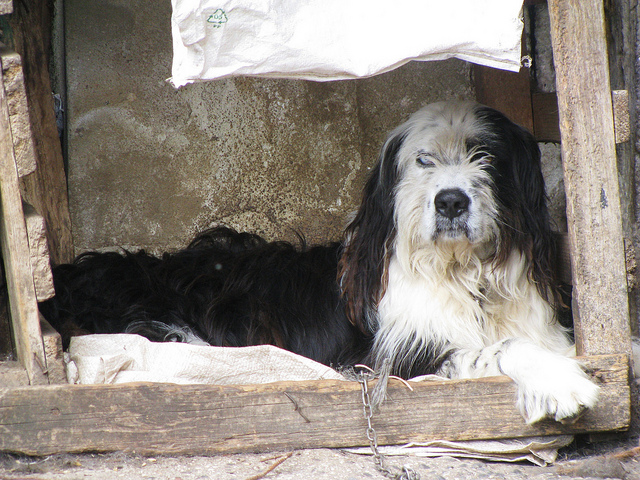As suggested by my gracious host Lucas, I started looking for the Cueva del Pindal, a limestone cave with prehistoric paintings that were discovered in 1908, part of the Paleolithic cave complex in Northern Spain that has been designated a UNESCO World Heritage Site in 2008. I found the park surrounding the cave and started walking towards the steep coastline that was composed of limestone rocks, pine trees and turquoise waters. I hiked around for a while on rocky terrain but was unable to find the entrance to the cave.

The turquoise waters of El Pindal
So I decided to continue my excursion and head back into the mountains. With my childhood memories from the Alps, I have always had a real fondness for mountain regions, and the Picos de Europa (the “Peaks of Europe”) were calling me again. I drove inland into the Cares River Valley and inhaled the gorgeous mountain panorama on this sunny day. I left the main road several times and drove up higher on small winding lanes to stop and take in the breathtaking scenery around me. Cows were grazing everywhere, and their bells were echoing throughout the valley.

An Asturian cow checks me out
Back on the main road traffic was light but I saw several groups of motorcyclists who were enjoying this extremely scenic drive. Asturias, with its combination of mountains and ocean, its lush green fields and forests, had definitely earned a spot in my heart as one of my favourite travel destinations in the world.

The Picos de Europa made me feel right at home
By now it was past 3:30 pm and I had gotten really hungry. I found a nice restaurant right on the main road and sat down for a savoury and very filling Asturian bean stew, the famous fabada. I stayed for a while and enjoyed the sun before I started my drive back through the ever narrower river valley. The Cares River Gorge is extremely popular among hikers and offers many different trails of various levels of difficulty. Not far away is the Naranjo del Bulnes, at 2519 metres one of the highest peaks of the Cantabrian mountain range and probably the best known destination for mountaineering in this area.

The fabada was delicious
On the way back to my hotel, La Posada de Babel in the rural village of La Pereda, I was surrounded by a huge flock of sheep, evidence of the pastoral character of this region. After a brief rest I sat down for dinner in the hotel’s restaurant and chef Reyes made a special vegetarian dish for me upon request: finely spiced farm-fresh green beans with freshly harvested local potatoes, followed by my favourite dessert: rice pudding.

The sheep are coming to greet me
I was joined by another hotel guest, an older gentleman by the name of Adolfo from Mexico City, who was indeed a descendant of one of the Indianos that had emigrated from Asturias a number of decades ago. He was here in town to settle some property matters that dated back many years and we had a really enjoyable discussion, comparing the cultures of Spain, Mexico and Cuba. The entire conversation was conducted in Spanish, so this proved to be a great opportunity for practicing my language skills.

My vegetarian dinner
Adolfo and I chatted all the way until 11 pm when I had to get to bed to rest up. Tomorrow I would have to leave Asturias and make my way south to Salamanca where I would be spending one night, followed by two nights in Madrid. My time in Asturias had come to an end and I felt a slight tinge of melancholy that I had to leave this gorgeous mountain area and its hospitable people that had become so dear to me over the last week. But I had to move on and more Spanish adventures were waiting for me…

The Asturian mountains captured my heart…
